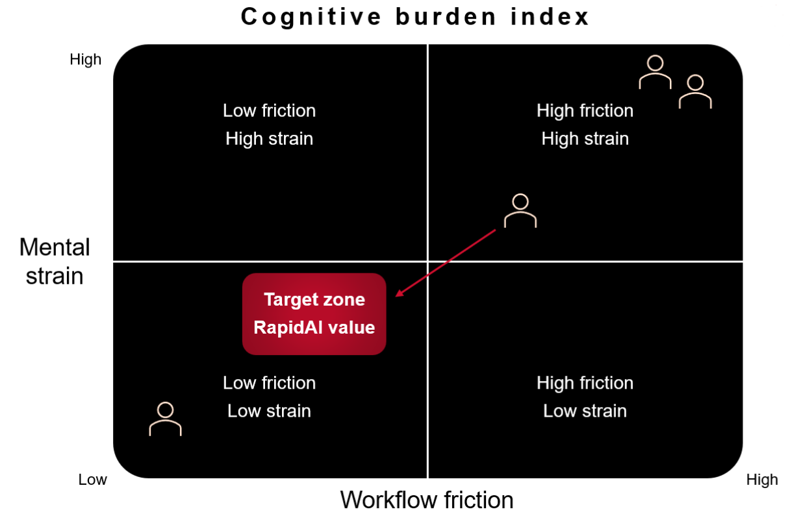The third most common cause of cardiovascular death, pulmonary embolism (PE) remains a key area of focus for clinical researchers globally, with new studies continually re-shaping what we know about effectively diagnosing and treating the disease.
The search to find safe and effective treatment options for PE continues, especially for acute cases, through a number of clinical studies. In a previous blog, we explored how AI-assisted solutions can help manage intermediate-high risk patients. In this post, we summarize a selection of clinical trials that evaluate the efficacy of thrombolytic therapy and medical devices in treating acute PE including intermediate, intermediate-high, and high-risk patients.
6 PE Studies You Should Know
Study: FLAME
Rationale: A previous study (FLARE) showed that percutaneous mechanical thrombectomy using Inari's FlowTriever System was safe and significantly reduced the RV/LV ratio in acute intermediate-risk PE patients.
1 in 20 PE patients is diagnosed with high-risk PE, and they have a 90-day mortality rate of 40%.
Description: The FLAME trial evaluates the treatment outcomes using Inari’s FlowTriever, a mechanical thrombectomy device, in high-risk PE patients.
The FLAME trial is a multicenter, non-randomized, parallel-group, observational study.
Study: HI-PEITHO
Rationale: While there are many treatment options for acute PE, the best treatment option for this condition is still under investigation.
Description: The aim of the HI-PEITHO trial is to compare two acute PE treatment options and address some of the gaps in clinical evidence.
Intermediate-high risk PE patients at a higher risk of early decompensation will either receive ultrasound-facilitated, catheter-directed thrombolysis (low-dose) and anticoagulant, or anticoagulant alone.
HI-PEITHO is a randomized trial with blinded outcome assessment.
Study: PEERLESS
Rationale: There is no study to date directly comparing the outcomes of the FlowTriever System to catheter-directed thrombolysis.
Description: The PEERLESS trial aims to compare the outcomes of using FlowTriever System versus catheter-directed thrombolysis to treat acute intermediate high-risk PE patients.
The trial will also include 150 non-randomized patients with an absolute contraindication to thrombolytics.
PEERLESS trial is a randomized, multicenter, controlled trial.
The trial will also include 150 non-randomized patients with an absolute contraindication to thrombolytics.
PEERLESS trial is a randomized, multicenter, controlled trial.
Study: PEITHO-3
Rationale: PEITHO trial showed that while full-dose thrombolytic treatment reduces the risk of hemodynamic instability in intermediate-risk PE patients, it increases the risk of intracranial hemorrhage.
Other studies have shown that reducing the dose of thrombolytic treatment could be effective, while decreasing the risk of bleeding.
Other studies have shown that reducing the dose of thrombolytic treatment could be effective, while decreasing the risk of bleeding.
Description: PEITHO-3 trial aims to assess the safety and efficacy of a reduced dose of thrombolytic therapy in patients with intermediate-high risk PE.
Patients will receive a reduced dose of Alteplase or placebo. Alteplase will be administered as a 15-minute intravenous infusion at 0.6 mg/Kg (total dose not exceeding 50 mg).
PEITHO-3 is a randomized, double-blind, multicenter, multinational trial with long-term follow-up.
Patients will receive a reduced dose of Alteplase or placebo. Alteplase will be administered as a 15-minute intravenous infusion at 0.6 mg/Kg (total dose not exceeding 50 mg).
PEITHO-3 is a randomized, double-blind, multicenter, multinational trial with long-term follow-up.
Study: PE-TRACT
Rationale: There is insufficient evidence of whether catheter-directed thrombolysis can be routinely used to treat intermediate-risk PE.
Previous studies using catheter-directed thrombolysis had several limitations.
Previous studies using catheter-directed thrombolysis had several limitations.
Description: If funded, the PE-TRACT trial aims to address the gaps in clinical evidence in using catheter-directed thrombolysis to treat intermediate-risk PE.
Patients enrolled in the trial will be treated with catheter-directed thrombolysis or anticoagulant alone.
PE-TRACT trial will be a rigorous, randomized trial.
Patients enrolled in the trial will be treated with catheter-directed thrombolysis or anticoagulant alone.
PE-TRACT trial will be a rigorous, randomized trial.
Study: STRIKE-PE
Rationale: EXTRACT-PE trial showed that aspiration thrombectomy using Penumbra’s Indigo aspiration system significantly reduced the RV/LV ratio in symptomatic, submassive acute PE patients. It also reduced the use of thrombolytics.
However, the study focused on short-term outcomes.
However, the study focused on short-term outcomes.
Description: The STRIKE-PE trial will evaluate the real world long-term functional outcomes, safety, and performance of Penumbra’s Indigo aspiration system in acute PE patients.
Patients with acute PE and an RV/LV ratio of ≥0.9 will be treated using the Indigo Aspiration System.
STRIKE-PE trial is a single-arm, multicenter trial.
Patients with acute PE and an RV/LV ratio of ≥0.9 will be treated using the Indigo Aspiration System.
STRIKE-PE trial is a single-arm, multicenter trial.
Posted by
RapidAI Editorial Team

RapidAI Editorial Team
Our editorial team is comprised of RapidAI marketing and clinical research experts.

